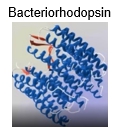The alpha helix is a fundamental type of secondary protein structure characterized by a coiled, spiral conformation of the protein backbone. This structure is stabilized by specific hydrogen bonds that form between the backbone atoms of the amino acids, rather than involving the side chains (R groups). These hydrogen bonds occur between distant amino acid residues along the same polypeptide chain, creating a stable configuration.
In the alpha helix, the hydrogen bonds are oriented nearly parallel to the helical axis, which is a key feature distinguishing it from other secondary structures, such as beta sheets. The arrangement of these bonds contributes to the overall stability of the helix, allowing it to maintain its shape. The typical depiction of an alpha helix is in a ribbon form, although it can also be represented as a cylinder in various illustrations.
Understanding the orientation and nature of the hydrogen bonds in the alpha helix is crucial, as it lays the groundwork for comprehending more complex protein structures. As we explore further, we will see how multiple alpha helices can interact and contribute to the overall architecture of proteins, enhancing their functionality and stability.


